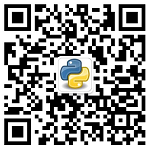了解过了 BeautifulSoup 对象的爬虫解析、lxml 扩展库的 xpath 语法等 html 的解析库,现在来说说 pyquery ,看名称就长得和 jquery 很像。其实,pyquery 就是仿照 jquery 的语法来实现的,语法使用可以说是几乎相同,算是前端爬虫的福利语言,如果你恰好会一些 jquery 的语法使用起来就会非常简单。
1、安装并导入 pyquery 扩展库
1pip install -i https://pypi.mirrors.ustc.edu.cn/simple/ pyquery
2
3# -*- coding: UTF-8 -*-
4
5# 导入 pyquery 扩展库
6from pyquery import PyQuery as pq
2、pyquery 执行网页请求(不常用)
1'''
2直接使用 PyQuery 对象即可发送网页请求,返回响应信息
3'''
4
5# GET 请求
6print(PyQuery(url='http://www.baidu.com/', data={},headers={'user-agent': 'pyquery'},method='get'))
7
8# POST 请求
9print(PyQuery(url='http://httpbin.org/post',data={'name':u"Python 集中营"},headers={'user-agent': 'pyquery'}, method='post', verify=True))3、pyquery 执行网页源代码解析(常用)
- 解析对象初始化
1# 首先获取到网页下载器已经下载到的网页源代码
2# 这里直接取官方的案例
3html_doc = """
4<html><head><title>The Dormouse's story</title></head>
5<body>
6<p class="title"><b>The Dormouse's story</b></p>
7
8<p class="story">Once upon a time there were three little sisters; and their names were
9<a href="http://example.com/elsie" class="sister" id="link1">Elsie</a>,
10<a href="http://example.com/lacie" class="sister" id="link2">Lacie</a> and
11<a href="http://example.com/tillie" class="sister" id="link3">Tillie</a>;
12and they lived at the bottom of a well.</p>
13
14<p class="story">...</p>
15"""
16
17# 初始化解析对象
18pyquery_obj = PyQuery(html_doc)- css选择器模式提取元素及元素文本
1# 获取a标签元素、文本
2print(pyquery_obj('a'))
3print(pyquery_obj('a').text())
4
5# 获取class=story元素、文本
6print(pyquery_obj('.story'))
7print(pyquery_obj('.story').text())
8
9# 获取id=link3元素、文本
10print(pyquery_obj('#link3'))
11print(pyquery_obj('#link3').text())
12
13# 获取body下面p元素、文本
14print(pyquery_obj('body p'))
15print(pyquery_obj('body p').text())
16
17# 获取body和p元素、文本
18print(pyquery_obj('p,a'))
19print(pyquery_obj('p,a').text())
20
21# 获取body和p元素、文本
22print(pyquery_obj("[class='story']"))
23print(pyquery_obj("[class='story']").text())- 获取元素之后再进一步提取信息
1# 提取元素文本
2print("......元素再提取......")
3print("所有a元素文本",pyquery_obj('a').text())
4print("第一个a元素的html文本",pyquery_obj('a').html())
5print("a元素的父级元素",pyquery_obj('a').parent())
6print("a元素的子元素",pyquery_obj('a').children())
7print("所有a元素中id是link3的元素",pyquery_obj('a').filter('#link3'))
8print("最后一个a元素的href属性值",pyquery_obj('a').attr.href)
- dom操作
1# attr() 函数获取属性值
2print(pyquery_obj('a').filter('#link3').attr('href'))
3# attr.属性,获取属性值
4print(pyquery_obj('a').filter('#link3').attr.href)
5print(pyquery_obj('a').filter('#link3').attr.class_)
6# 添加 class 属性值 w
7pyquery_obj('a').filter('#link3').add_class('w')
8print(pyquery_obj('a').filter('#link3').attr('class'))
9
10# 移除 class 属性值 w
11pyquery_obj('a').filter('#link3').remove_class('sister')
12print(pyquery_obj('a').filter('#link3').attr('class'))
13# 移除标签
14pyquery_obj('html').remove('a')
15print(pyquery_obj)更多精彩前往微信公众号【Python 集中营】,专注于 python 技术栈,资料获取、交流社区、干货分享,期待你的加入~


**粗体** _斜体_ [链接](http://example.com) `代码` - 列表 > 引用。你还可以使用@来通知其他用户。